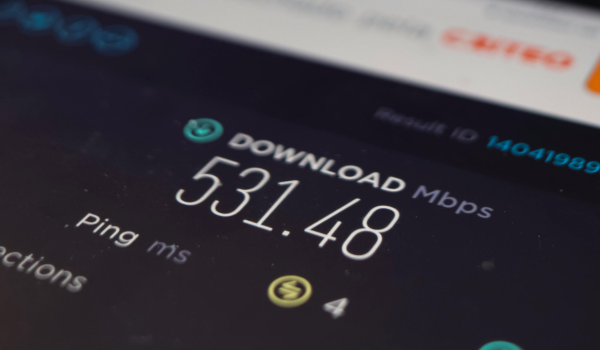Why Telephony and Connectivity Are Strategic Assets — Not Commodities
If you’re still making decisions about your connectivity or telephony based purely on price, I’ve got some bad news. You might think you're cutting down on costs, but the reality is that you’re one outage away from a serious business disruption. Many SMBs still believe that telephony and connectivity are simply commodities: interchangeable services where the lowest bid wins.
But this is a myth that I challenge every chance I get. I’ve lost count of how many calls I’ve had that start with, “Our phones are down, our internet’s dead, and our provider isn’t picking up.” It’s frustrating, it’s costly — and worst of all, it’s avoidable.
In my many years of experience in helping businesses like yours stay connected, I can tell you that it’s not just about having a connection or a phone system. It’s about having one that’s built for resilience, backed by the right expertise, and capable of scaling with your business — without crumbling the minute something goes wrong.
In this article, I’m going to cut through the noise that the comms & connectivity industry tends to shout about. Instead, I’ll show you why your internet and phone systems aren’t just operational tools, they’re the backbone of your business.
–
What This Blog Covers:
- The Myth: “It’s All the Same, Just Cheaper”
- The Hidden Cost of Cheap Connectivity
- Connectivity: The Infrastructure Driving Your Entire Operation
- Telephony Is a Business System, Not a Feature
- Start with the Outcome, Not the Interface
The Myth: “It’s All the Same, Just Cheaper”
The biggest misconception around cloud telephony and connectivity is that they’re commodities: nice-to-haves that aren’t quite essential to your business. I get it, many of my customers are under the impression that as long as they have “good enough” fibre and internet, and their phones can make and receive calls, that should really be the end of it. If you have a similar mindset, then you, too, might only be looking at what you can get for the cheapest price, because it’s easy to look at connectivity and telephony as a means to an end.
In your defence, it can be quite tricky to distinguish between one fibre quote and another, and all too easy to assume BT, Virgin, TalkTalk, Gamma or Colt all offer the same product at different prices. Many of my customers fall into the trap of wanting to go for the cheapest option, simply because they don’t fully understand the value of these solutions. But what happens when that cheap solution is on the fritz and you’ve lost connection, even for a day? What would a full day of downtime cost your business, your brand, and your revenue?
This is exactly why connectivity and telephony aren’t just commodities: they’re fundamental to the operations of your business. All you have to do is briefly put the price to the side, and think about things like resilience, uptime, failover, customer support, and future-proofing instead – all of which are crucial to business continuity.

The Hidden Cost of Cheap Connectivity
Let’s focus on the connectivity side of things and consider what happens when things go wrong. Remember the outage that took down the London Underground? Or the widespread blackouts in Spain and Portugal that knocked out broadband for thousands? One power fault, and the entire network was compromised! What about Marks & Spencer? Yes, they were hacked, but the result was downtime – which cost them a £300 million hit to their operating profit this fiscal year purely from not being able to trade.
While it wouldn’t be as catastrophic, the very same thing could happen to your business – especially if you opt for the “lowest hanging fruit” option. Ask yourself: If my internet went down for a full working day, how much would it cost me? I asked a customer this once, and this was their answer (time for some quick maths): They had 50 outbound sales reps. Each one averaged £1,000 of revenue per day. That’s a £50,000 loss, minimum. And that’s before we even talk about reputational damage.
Think of your connectivity like a parachute: it’s not built for when things go right, but for when they go wrong (which they will). Another question I ask my customers is: What’s your backup plan? True resilience goes beyond just a second line plugged into the same exchange, but having a genuine secondary route. A comprehensive backup plan includes a completely separate connection. I’m talking about a different exchange, different ducting, and even having different suppliers.
At Babble, we’re huge advocates for not putting your eggs in one basket. We separate your lines, build in failover, duplicate routers, and minimise single points of failure. That’s where price becomes more of an afterthought in favour of resilience.

Connectivity: The Infrastructure Driving Your Entire Operation
 Resilient and efficient communication is the main reason behind the UK’s copper switch-off. And with this initiative in full swing, the days of “cheap and cheerful” broadband are over. Fibre is king — but not all fibre is created equal.
Resilient and efficient communication is the main reason behind the UK’s copper switch-off. And with this initiative in full swing, the days of “cheap and cheerful” broadband are over. Fibre is king — but not all fibre is created equal.
Let me break this down quickly:
- Contended circuits (like copper) = shared bandwidth = slower speeds at peak times
- Uncontended circuits (like dedicated fibre) = consistent speed = better reliability
Think about your office. Everything is cloud-based now: from CRMs and VoIP to file storage and video calls – and everything in between. This means if that fibre line goes down, your entire operation grinds to a halt. And here's the kicker: the shift to fibre means more dependence on electricity and the national grid, not less. That makes your internet connection the foundation of your operation – this is certainly one area where you don’t want to cut costs.

Telephony Is a Business System, Not a Feature
There’s a lot of noise in the hosted telephony industry — acronyms, shiny interfaces, dashboards designed to impress, and cut-price licensing models. At Babble, we look beyond the flash and lead with the BroadSoft Cisco platform, through our partner Evolve. It’s a Gartner Magic Quadrant leader for hosted telephony. Global uptime is at 99.999%. Feature-rich, FCA-regulated, and PCI-compliant. In English, all of this simply means that we work with the best and bring in the experts.

Start with the Outcome, Not the Interface
Look, cost is always going to come up (which is why I’ve been touching on it throughout this article). I’m not saying the most expensive solution is the best, and the cheapest is the worst. But what I am saying is that you should focus on the features and not the prices – because every business has different needs.
In other words, features matter, but only if they’re useful. I can give you a 100-feature platform, but if you only use 10, you’re overpaying for fluff. That’s why we start with the question: What are you trying to achieve? (Yes, we’re a curious bunch here.) Then we build around that.
If your goal is inbound sales, we focus on uptime and call routing. If you need detailed analytics, we bring in Akixi for reporting. If security is top priority, Dubber handles the recordings. Both solutions are best-in-class and provide a unified, integrated, and tailored solution to our customers’ needs – not a one-size-fits-all gimmick.

What Connectivity and Telephony Really Mean for Your Business
If you’ve ever felt unsure about whether you’re paying too much or too little for your connectivity or telephony, you’re not alone. But the answer lies in whether your current system is helping you achieve your goals and meets your business’s needs – not the price tag.
Too often, I see businesses treating these systems as boxes to tick as far as getting the bare minimum done. Then something breaks, and the impact is immediate: lost sales, frustrated teams, unhappy customers. All of which could be avoided if the infrastructure was bought as a critical function, and not a commodity.
 I’ve spent years helping businesses get this right: from infrastructure choices to disaster recovery plans and everything in between. I don’t believe in scare tactics or one-size-fits-all advice. I believe in listening, understanding what matters to you (hence all the questions), and helping you build a setup that’s robust, resilient, and ready for the future.
I’ve spent years helping businesses get this right: from infrastructure choices to disaster recovery plans and everything in between. I don’t believe in scare tactics or one-size-fits-all advice. I believe in listening, understanding what matters to you (hence all the questions), and helping you build a setup that’s robust, resilient, and ready for the future.
So if your current solution feels a bit too fragile, or you’re not sure how well your systems would cope in a crisis, now’s the time to re-evaluate. Whether that means revisiting your failover plans, asking better questions about uptime guarantees, or just getting clearer on what’s possible — I’m here to help you figure it out. Because this isn’t about selling tech. It’s about keeping your business connected, protected, and confident in what’s next.
Subscribe by email
You May Also Like
These Related Stories

How Much Does a Leased Line Cost in the UK in 2025?
.jpg)
Is SoGEA Reliable Enough for Business?


